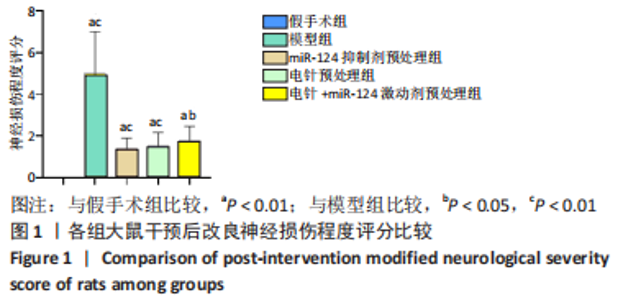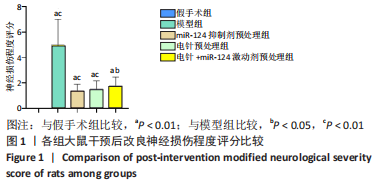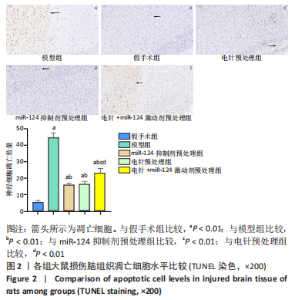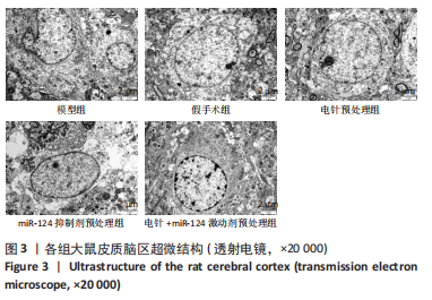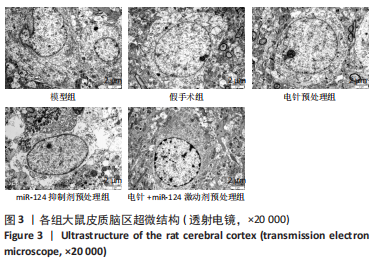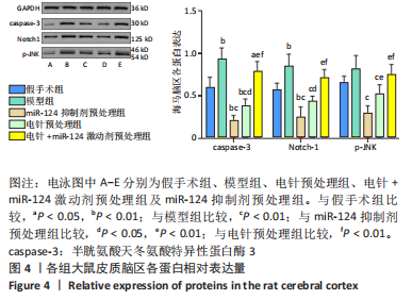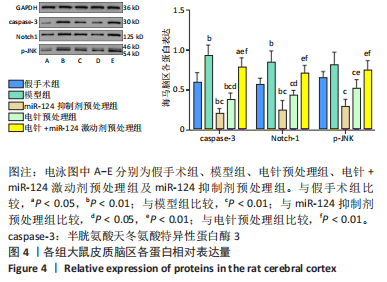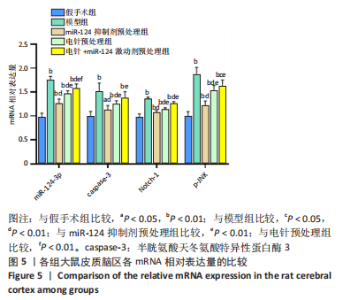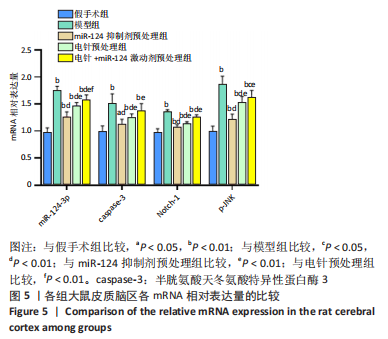[1] GBD 2016 Neurology Collaborators. Global, regional, and national burden of neurological disorders, 1990-2016: a systematic analysis for the Global Burden of Disease Study 2016. Lancet Neurol. 2019;18(5):459-480.
[2] CAMPBELL BCV, DE SILVA DA, MACLEOD MR, et al. Ischaemic stroke. Nat Rev Dis Primers. 2019;5(1):70.
[3] YANG Q, HUANG Q, HU Z, et al. Potential Neuroprotective Treatment of Stroke: Targeting Excitotoxicity, Oxidative Stress, and Inflammation. Front Neurosci. 2019;13:1036.
[4] ZHANG R, LIN YQ, WANG WS, et al. Excessive nNOS/NO/AMPK signaling activation mediated by the blockage of the CBS/H2S system contributes to oxygen‑glucose deprivation‑induced endoplasmic reticulum stress in PC12 cells. Int J Mol Med. 2017;40(2):549-557.
[5] GRAHAM SH, Chen J. Programmed cell death in cerebral ischemia. J Cereb Blood Flow Metab. 2001;21(2):99-109.
[6] SUN Y, GUI H, LI Q, et al. MicroRNA-124 protects neurons against apoptosis in cerebral ischemic stroke. CNS Neurosci Ther. 2013;19(10):813-819.
[7] MOKABBER H, NAJAFZADEH N, MOHAMMADZADEH VARDIN M. miR-124 promotes neural differentiation in mouse bulge stem cells by repressing Ptbp1 and Sox9. J Cell Physiol. 2019;234(6):8941-8950.
[8] SUN H, LI JJ, FENG ZR, et al. MicroRNA-124 regulates cell pyroptosis during cerebral ischemia-reperfusion injury by regulating STAT3. Exp Ther Med. 2020;20(6):227.
[9] ZHU F, LIU JL, LI JP, et al. MicroRNA-124 (miR-124) regulates Ku70 expression and is correlated with neuronal death induced by ischemia/reperfusion. J Mol Neurosci. 2014;52(1):148-155.
[10] MIAO W, YAN Y, BAO TH, et al. Ischemic postconditioning exerts neuroprotective effect through negatively regulating PI3K/Akt2 signaling pathway by microRNA-124. Biomed Pharmacother. 2020;126:109786.
[11] HE X, CUI C, CHEN M. Effect of bone marrow mesenchymal stem cells transplantation on immune inflammatoryresponse in experimental ischemic cerebral infarction in rats. Chin J ImmunI. 2018;34(5):647-652.
[12] ZHU W, YE Y, LIU Y, et al. Mechanisms of Acupuncture Therapy for Cerebral Ischemia: an Evidence-Based Review of Clinical and Animal Studies on Cerebral Ischemia. J Neuroimmune Pharmacol. 2017;12(4):575-592.
[13] Zhan J, Pan R, Zhou M, et al. Electroacupuncture as an adjunctive therapy for motor dysfunction in acute stroke survivors: a systematic review and meta-analyses. BMJ Open. 2018;8(1):e017153.
[14] 刘燕,王陈妮,兰崴,等.通督调神针刺对脑缺血再灌注损伤大鼠神经功能及VEGF、NGF、MBP表达的影响[J].中国中医基础医学杂志, 2022,28(2):218-223.
[15] 陈四芳,韩为,孙善斌,等.基于ASL和PWI技术探讨通督调神针刺对缺血性脑卒中高危患者脑血流的影响[J].中国针灸,2018,38(9):913-917.
[16] 徐志新,韩为,张利达,等.通督调神针刺法对高同型半胱氨酸血症患者颈动脉内-中膜厚度及脑血流动力学的影响[J].山西中医药大学学报, 2021,22(6):426-430.
[17] 计海生,王颖,李慧惠,等.通督调神针刺结合中药治疗克罗深濑综合征一例[J].环球中医药,2022,15(1):134-136.
[18] 章薇,娄必丹,李金香,等.中医康复临床实践指南·缺血性脑卒中(脑梗死)[J].康复学报,2021,31(6):437-447.
[19] 周家荣,吴冰冰.通督调神针法对脑卒中后患者认知功能的影响的随机对照研究[J].中医外治杂志,2021,30(5):26-27.
[20] 余曙光,郭义,王瑞辉,等.实验针灸学[M].上海:上海科学技术出版社,2014:145-148.
[21] RUAN GP, HAN YB, WANG TH, et al. Comparative study among three different methods of bone marrow mesenchymal stem cell transplantation following cerebral infarction in rats. Neurol Res. 2013;35(2):212-220.
[22] TURNER RC, DIPASQUALE K, LOGSDON AF, et al. The role for infarct volume as a surrogate measure of functional outcome following ischemic stroke. J Syst Integr Neurosci. 2016;2(4):10.15761/JSIN.1000136.
[23] CHOMCZYNSKI P, SACCHI N. Single-step method of RNA isolation by acid guanidinium thiocyanate-phenol-chloroform extraction. Anal Biochem. 1987;162(1):156-159.
[24] POWERS WJ, RABINSTEIN AA, ACKERSON T, et al. Guidelines for the Early Management of Patients With Acute Ischemic Stroke: 2019 Update to the 2018 Guidelines for the Early Management of Acute Ischemic Stroke: A Guideline for Healthcare Professionals From the American Heart Association/American Stroke Association. Stroke. 2019;50(12):e344-e418.
[25] DIENER HC, HANKEY GJ. Primary and Secondary Prevention of Ischemic Stroke and Cerebral Hemorrhage: JACC Focus Seminar. J Am Coll Cardiol. 2020;75(15):1804-1818.
[26] DOYLE KP, SIMON RP, STENZEL-POORE MP. Mechanisms of ischemic brain damage. Neuropharmacology. 2008;55(3):310-318.
[27] TAHTA A, IZGI N, BAGCI-ONDER T, et al. Assessment of the MRI and Behavioral Test Results in a Focal Cerebral Ischemia-Reperfusion Model in the Rat after Separate and Combined Use of Mouse-Derived Neural Progenitor Cells, Human-Derived Neural Progenitor Cells and Atorvastatin. Turk Neurosurg. 2018;28(4):571-581.
[28] CATANESE L, TARSIA J, FISHER M. Acute Ischemic Stroke Therapy Overview. Circ Res. 2017;120(3):541-558.
[29] WU CX, LIU R, GAO M, et al. Pinocembrin protects brain against ischemia/reperfusion injury by attenuating endoplasmic reticulum stress induced apoptosis. Neurosci Lett. 2013;546:57-62.
[30] 李然伟,郭珺,窦进,等.缪刺巨刺法治疗脑卒中后肩手综合征的疗效观察[J].针刺研究,2020,45(2):152-156.
[31] 俞年塘,韩为,张玲,等.针刺预处理对卒中早期预警的研究[J].中国针灸,2013,33(11):980-984.
[32] 秦越人.难经[M].北京:科学技术文献出版社,2010:78-81.
[33] 程红亮,胡培佳,王涛,等.张道宗的通督调神针刺法治疗脑病经验[J].中国临床保健杂志,2015,18(4):426-428.
[34] 郑仕平,韩为,储浩然,等.通督调神针灸预处理对脑缺血再灌注大鼠相关微小RNA调控机制的研究[J].针刺研究,2015,40(2):99-103.
[35] 郑仕平,韩为,储浩然,等.通督调神针灸预处理对脑缺血再灌注大鼠miRNA664及MMP9调控机制的研究[J].上海针灸杂志,2016,35(1):76-80.
[36] 陈四芳,韩为,孙善斌,等.基于ASL和PWI技术探讨通督调神针刺对缺血性脑卒中高危患者脑血流的影响[J].中国针灸,2018,38(9):913-917.
[37] 赵晓君,赵桂娥,刘红梅,等.通督调神针法联合康复训练治疗缺血性脑卒中患者吞咽障碍临床疗效观察[J].四川中医,2022,40(1):190-194.
[38] 牛玉莲,支颍川,李娟,等.通督调神针刺结合重复经颅磁刺激对脑梗死患者康复治疗的效果观察[J].世界中医药,2022,17(9):1322-1325+1330.
[39] 刘丹妮,周君,黄夏荣,等.电针“水沟”“百会”穴对脑缺血再灌注损伤大鼠海马神经元自噬的影响[J].针刺研究,2022,47(6):491-496.
[40] JIN XL, LI PF, ZHANG CB, et al. Electroacupuncture alleviates cerebral ischemia and reperfusion injury via modulation of the ERK1/2 signaling pathway. Neural Regen Res. 2016;11(7):1090-1098.
[41] JIANG SH, TU WZ, ZOU EM, et al. Neuroprotective effects of different modalities of acupuncture on traumatic spinal cord injury in rats. Evid Based Complement Alternat Med. 2014;2014:431580.
[42] LIU X, FENG Z, DU L, et al. The Potential Role of MicroRNA-124 in Cerebral Ischemia Injury. Int J Mol Sci. 2019;21(1):120.
[43] QIAN Y, CHOPP M, CHEN J. Emerging role of microRNAs in ischemic stroke with comorbidities. Exp Neurol. 2020;331:113382.
[44] XU DD, ZHOU PJ, WANG Y, et al. Reciprocal activation between STAT3 and miR-181b regulates the proliferation of esophageal cancer stem-like cells via the CYLD pathway. Mol Cancer. 2016; 15(1):40.
[45] DE LA POMPA JL, WAKEHAM A, CORREIA KM, et al. Conservation of the Notch signalling pathway in mammalian neurogenesis. Development. 1997; 124(6):1139-1148.
[46] CHEN M, SUN J, LU C, et al. The impact of neuronal Notch-1/JNK pathway on intracerebral hemorrhage-induced neuronal injury of rat model. Oncotarget. 2016;7(45):73903-73911.
[47] ARUMUGAM TV, CHENG YL, CHOI Y, et al. Evidence that gamma-secretase-mediated Notch signaling induces neuronal cell death via the nuclear factor-kappaB-Bcl-2-interacting mediator of cell death pathway in ischemic stroke . Mol Pharmacol. 2011;80(1):23-31.
[48] ZHANG TH, LIANG LZ, LIU XL, et al. LncRNA UCA1/miR-124 axis modulates TGFβ1-induced epithelial-mesenchymal transition and invasion of tongue cancer cells through JAG1/Notch signaling. J Cell Biochem. 2019;120(6): 10495-10504.
[49] TAO J, CHEN B, GAO Y, et al. Electroacupuncture enhances hippocampal NSCs proliferation in cerebral ischemia-reperfusion injured rats via activation of notch signaling pathway. Int J Neurosci. 2014;124(3):204-212.
|
